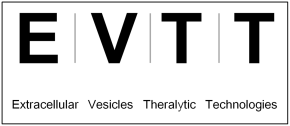Differential fluorescence nanoparticle tracking analysis for enumeration of the extracellular vesicle content in mixed particulate solutions
A major concern for the extracellular vesicle (EV) field is the current lack of accurate methods for EV quantification. Total protein measurement fails to reliably quantify EVs from serum-containing conditioned media and classical nanoparticle tracking analysis (NTA) allows quantification and size determination of particles, but fails to discriminate between membrane-bounded EVs, lipids and protein aggregates. However, EVs can be fluorescently labelled with non-specific membrane markers or with antibodies specifically recognizing EV surface marker proteins. Fluorescence-based NTA (F-NTA) is thus emerging as a method for counting and phenotyping of EVs. We have validated a differential NTA/F-NTA method using specific antibodies against surface markers in analogy to flow cytometric analyses. EVs from umbilical cord mesenchymal stromal cells (UC-MSCs) were isolated by a combined tangential flow filtration and ultracentrifugation protocol. EV preparations from 2 × 107 cells were stained with AlexaFluor 488-conjugated specific antibodies or corresponding isotype controls. Amount and size of particles in normal scattering light mode (N mode) versus fluorescence mode (F mode, laser wavelength 488 nm) was measured using ZetaView Nanoparticle Tracking Analyzer (Particle Metrix). Cryo electron microscopy (EM) was used to verify the presence of membrane bilayer surrounded nanoparticles. All UC-MSC-EV preparations were found positive for typical EV marker proteins and negative for MHC class I. Novel and improved devices that include more sensitive cameras for detection in the fluorescent mode further increase the detection limit. Differential NTA/F-NTA facilitates determination of the percentage of EV marker protein-positive nanoparticles within a mixed particulate solution. The set of markers can be extended to other MSC-EV positive and negative surface proteins in order to establish F-NTA-based profiling as a supporting method for the quantification of EVs. [get the paper]











